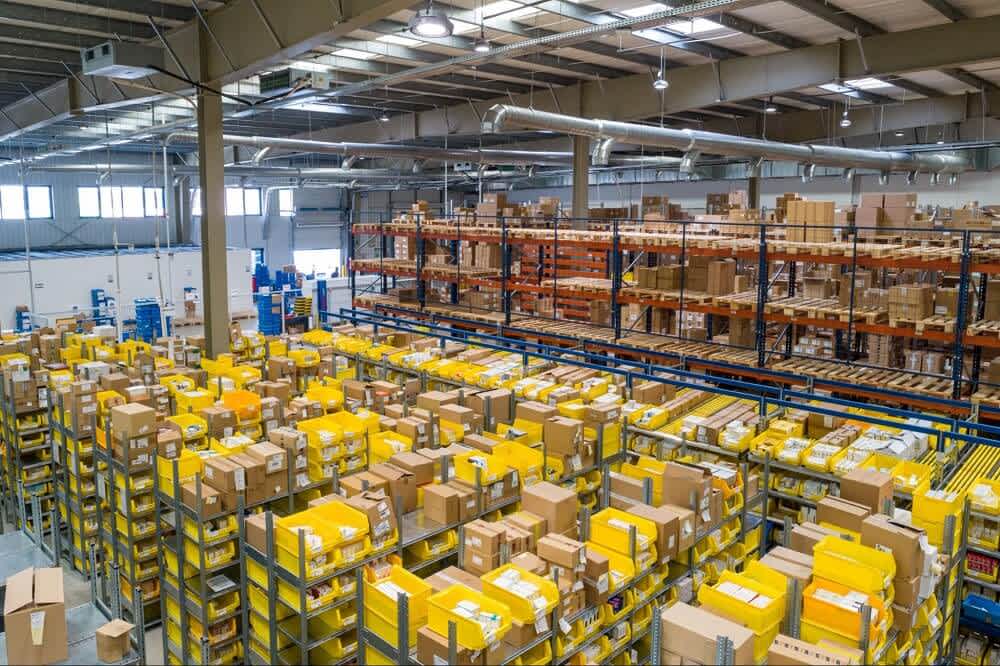
by Sam Franklin | September 13, 2022 | 8 min read
The importance of pick lists in order fulfilment
Get fundedLast updated: October 06, 2022
Fulfiling customer orders in a timely and efficient manner is a top priority for eCommerce businesses. Each step in the order fulfilment process - storage, order picking, packing, shipping, and delivery - follows a meticulous system designed to optimise time and save costs.
Picking products for an order in a warehouse is an important step of the fulfilment process, and picking lists are crucial. Sending a customer the right order at the right time depends on a flawless picking list. These lists, which include information on products to be retrieved, like the name and description of the item, quantity, and location in the facility, are assigned by a picking team to an operator on the warehouse floor.
In this article, we talk about what picking lists are, what they constitute, various types, and different methods deployed for order picking in a warehouse.
Table of contents
- What is a picking list?
- Types of picking lists
- Picking methods
- What should a picking list contain?
- Pick lists in a warehouse management system
- FAQs
What is a picking list?
A picking list is a document detailing items that need to be retrieved in a warehouse in order to fulfil a customer order. A picking list includes shipping data, the location of products in the warehouse, the operator picking route, and any other information required to fulfil an order.
A picking list helps keep the warehouse management process highly organised by assigning instructions to operators, so they have a set workflow they need to follow.
Types of picking lists
There are mainly two types of picking lists:
Physical picking list A physical pick list is the traditional way of creating a picking list. These are a set of instructions printed out on a piece of paper which were largely used before logistics companies started using warehousing managing systems (WMS), WiFi, or mobile technology. Some warehouses still use physical picking lists.
Digital picking list Digital picking lists are more common now, especially in large warehouses that use tablets, mobile, and WMS on the floor. In large, modern warehouses, workers carry hand-held devices that they can use to access their digital picking list. Digital pick lists help improve accuracy, productivity, and efficiency. They can also include images of the products, making the picking process simpler.
Read our blog on order fulfilment here.

Picking methods
Order picking is a crucial aspect of warehousing. In order to minimise cost and provide error-free service, warehouses use various picking methods. Different types of warehouses in different industries use methods that can reduce the amount of time it takes for an operator to retrieve items and bring them to the staging area for packaging and dispatch.
The type of pick list your business uses depends on a variety of factors, like the picking method used in your warehouses, the volume of orders, and the nature and size of the business. Here are the main types of picking methods used by warehouses:
Discrete picking
The most common type of order picking process, discrete picking, involves one operator picking an entire order and taking it to the staging area. Using this picking method, an operator moves across the warehouse, retrieving each item in a particular order. This method works for small warehouses with a relatively smaller number of orders to service.
Batch picking
Batch picking involves operators retrieving items for a batch or group of orders at the same time. This means a single trip to the warehouse or a zone inside the warehouse.
This method increases operational efficiency as one operator can pick a batch of orders and cut down on the number of trips to a single location. Batch picking is used for orders with identical picking lists.
Zone picking
Zone picking involves retrieving parts of an order from different zones. This method of picking is used in warehouses where SKUs are divided into different zones or sections with individual operators assigned to them.
Each operator retrieves products from a single zone. If an order has products that need to be picked from multiple zones, a box containing the order items is sent to the next zone on a conveyor belt. This is also called the pick and pass method.
Wave picking
Wave picking involves grouping orders into batches or "waves". During each wave, operators retrieve products from their allocated zones, which are then sorted into individual orders in the staging area. This method results in less time spent travelling around the warehouse.
Let's take an example. Assume that 50 orders need products from a particular zone. A picker will go to a single location and pick the 50 items and bring them back to the staging area. These items are then added to their orders. This saves time and builds efficiency.
Cluster picking
Under the cluster picking method, operators retrieve SKUs on multiple pick lists and place them in separate bins or totes for separate orders or pick lists. It sounds similar to batch picking, except that each order is also sorted while being picked.
Want to learn more about order picking? Click here.

What should a picking list contain?
Here are the essential components of a pick list:
Picking list number
Every pick list should have a unique identification number for record-keeping and to avoid duplication. A picking list should also include the date and time that it is generated.
Customer information
Having customer information is important especially when items in a single order are being picked by different operators. This may not necessarily help the operators, but this is important information when products are being sorted and added to different orders.
Order number
The picking list should include information on the purchase order, like the order number, order date, and information about the dispatch dock. If operators are picking items for different orders, the pick list should have the order number for each product as well as the quantity of each product to be retrieved.
Product SKUs or UPC codes
A stock-keeping unit (SKU) code is a one-of-a-kind alphanumeric reference number used to manage stock in a warehouse. The universal product code (UPC or UPC code) is a unique set of numbers that is printed on retail products in order to identify them.
These codes are used to identify products that need to be picked in the warehouse.
Product name, weight, size, and description
This is helpful in the identification of products and in minimising errors. It is also useful to include details like the size of the product and the number of units.
Warehouse operators retrieve products of varying weights and sizes, so including the size and weight of the product will ensure that operators organise if they need another person to help them, a forklift, or whether they have enough space in their bag.

Warehouse location of products
Picking lists should include the location of each product within the warehouse. This helps operators organise their movement around the warehouse and makes the process more time-efficient.
Barcodes
Many warehouses use the GS1-128 barcodes - standard international codes containing key information for shipping and the supply chain - to identify and track products.
Pick lists in a warehouse management system
WMS is a standalone software or a part of an enterprise resource planning (ERP) system that helps manage daily operations at a warehouse or a distribution centre. It has capabilities like tracking the movement of goods in the warehouse, stock locating, inventory management, order allocation, order picking, replenishment, packing, shipping, and more.
Picking lists are essential to the order picking process. Picking lists, which are generated on a WMS, help streamline and optimise the order management process. The system directs operators to the location of each product, down to the storage level and aisle and rack number. It also guides operators to the containers each item has to be placed in.
Operators access picking lists on mobile scanners. A digital picking list also has barcode readers that operators can use to scan the goods, making the process fast, efficient, and error-free.
FAQs
What is the difference between a pick list, packing slip, and shipping label?
These terms can be confusing, but they are completely different from each other. Each one of them serves a different purpose. A picking list is an internal warehouse document with information about products that need to be retrieved to fulfil a customer order.
A packing slip is a document that includes an itemised list of contents in a shipment. It is an important document in international shipping as it can be used to identify lost cargo for insurance purposes or in case of inspection by customs.
A packing slip includes the origin and destination of the products, the weight and volume of the package, a commercial invoice, information about the sender, receiver, and freight forwarder, and a detailed description of packages in a shipment.
Meanwhile, a shipping label, or a package label, is used to display information on the contents of a package, the receiver's name and address, the weight of the package, and a tracking barcode. The information on a shipping label is meant to help a courier service deliver a package to the end consumer.
How are picking lists made?
Without a WMS, a pick list can be created on MS Excel or Google Sheets. There are templates available online that you can customise and use for your specific needs. Digital picklists are generated automatically if your warehouse is using a WMS.
Written by

Sam founded his first startup back in 2010 and has since been building startups in the Content Marketing, SEO, eCommerce and SaaS verticals. Sam is a generalist with deep knowledge of lead generation and scaling acquisition and sales.


